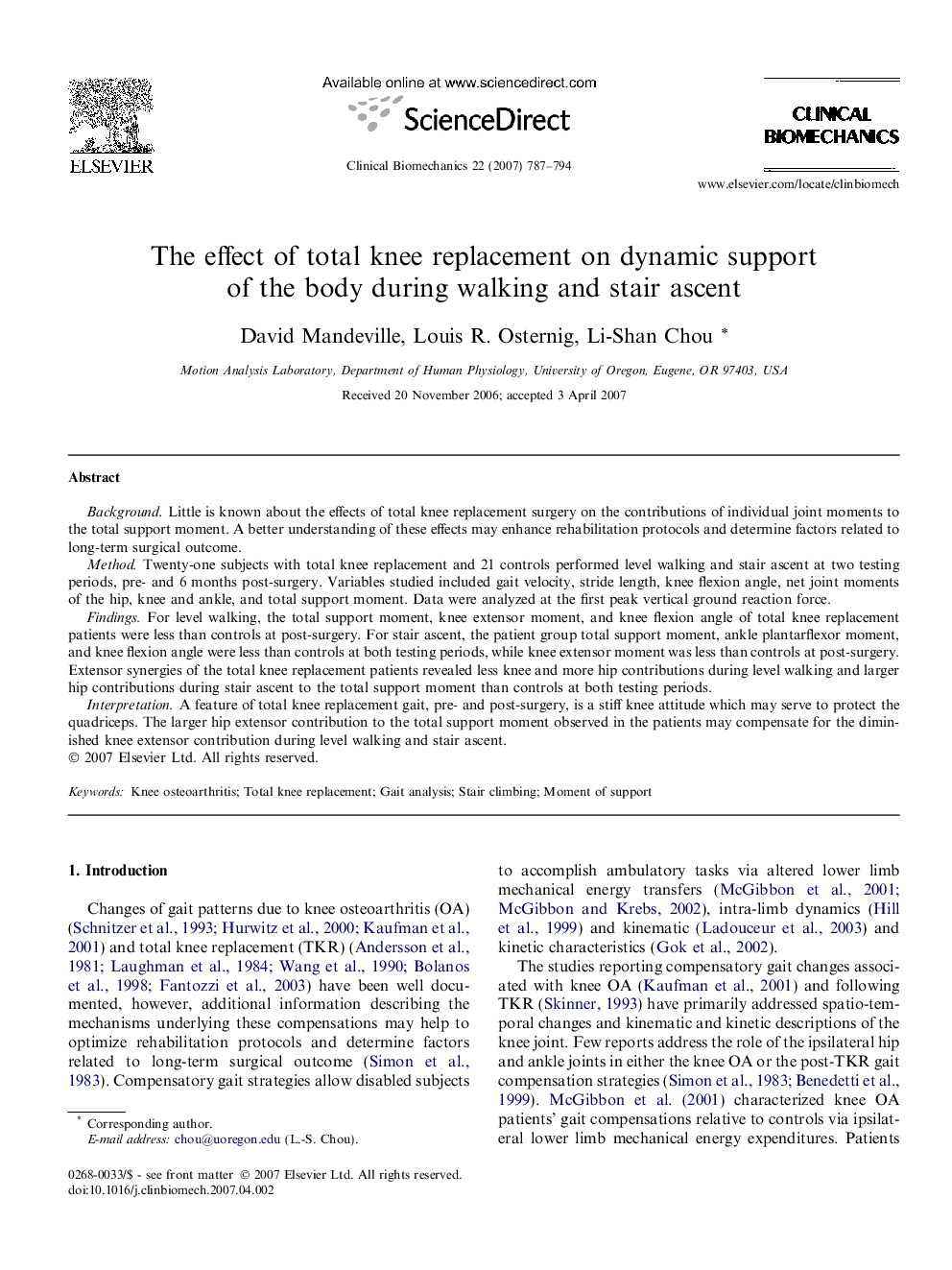| Article ID | Journal | Published Year | Pages | File Type |
|---|---|---|---|---|
| 4051260 | Clinical Biomechanics | 2007 | 8 Pages |
BackgroundLittle is known about the effects of total knee replacement surgery on the contributions of individual joint moments to the total support moment. A better understanding of these effects may enhance rehabilitation protocols and determine factors related to long-term surgical outcome.MethodTwenty-one subjects with total knee replacement and 21 controls performed level walking and stair ascent at two testing periods, pre- and 6 months post-surgery. Variables studied included gait velocity, stride length, knee flexion angle, net joint moments of the hip, knee and ankle, and total support moment. Data were analyzed at the first peak vertical ground reaction force.FindingsFor level walking, the total support moment, knee extensor moment, and knee flexion angle of total knee replacement patients were less than controls at post-surgery. For stair ascent, the patient group total support moment, ankle plantarflexor moment, and knee flexion angle were less than controls at both testing periods, while knee extensor moment was less than controls at post-surgery. Extensor synergies of the total knee replacement patients revealed less knee and more hip contributions during level walking and larger hip contributions during stair ascent to the total support moment than controls at both testing periods.InterpretationA feature of total knee replacement gait, pre- and post-surgery, is a stiff knee attitude which may serve to protect the quadriceps. The larger hip extensor contribution to the total support moment observed in the patients may compensate for the diminished knee extensor contribution during level walking and stair ascent.
